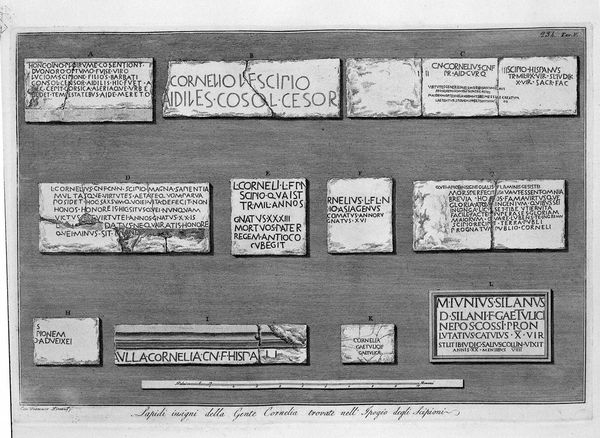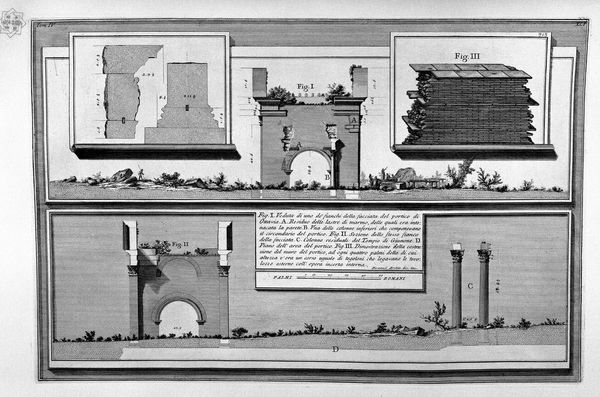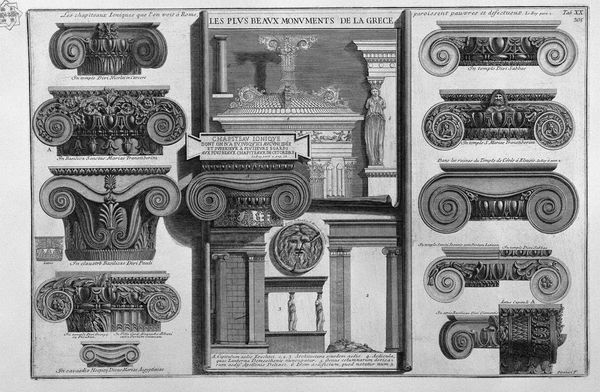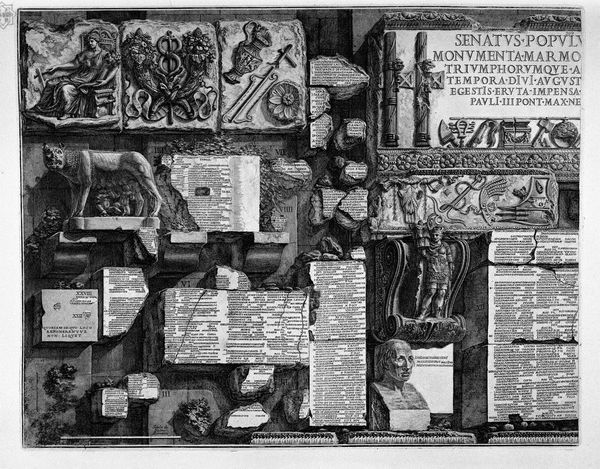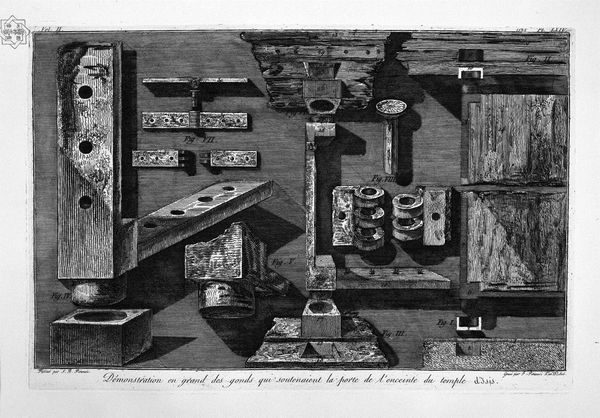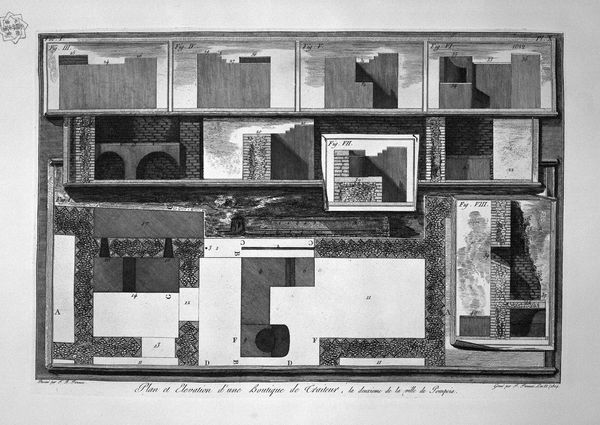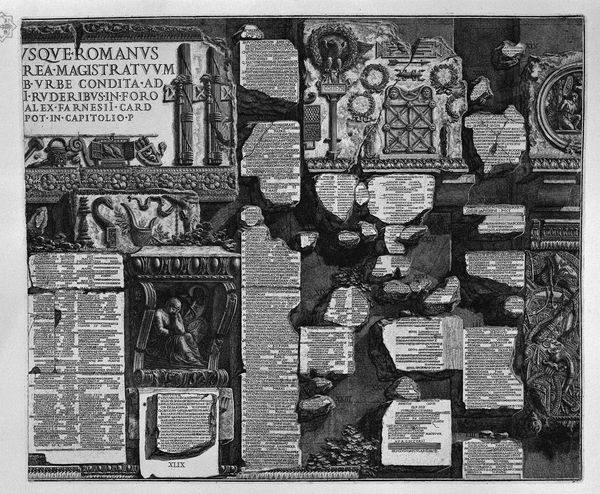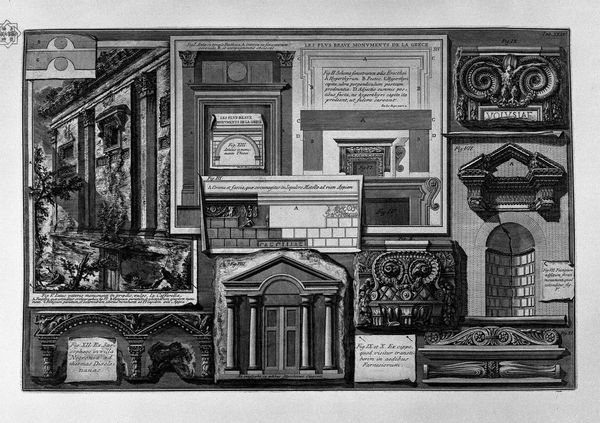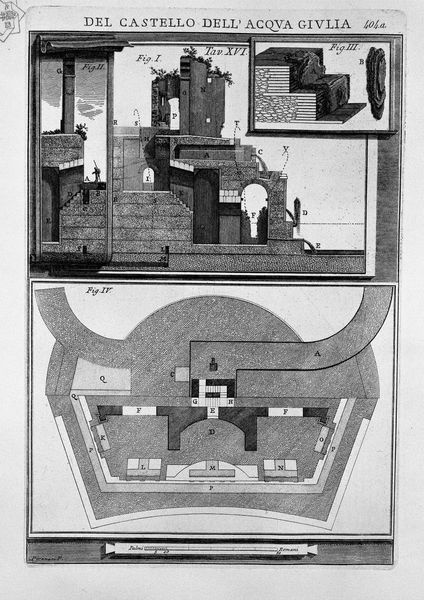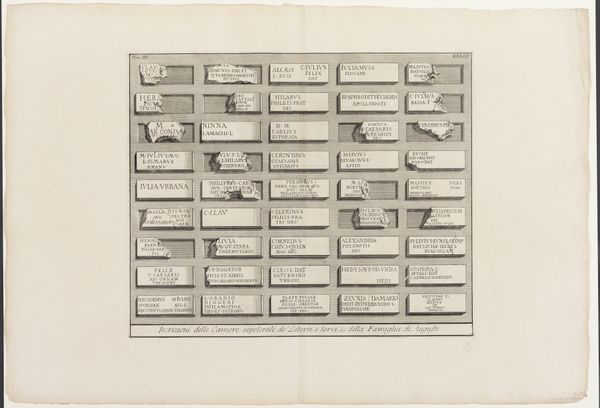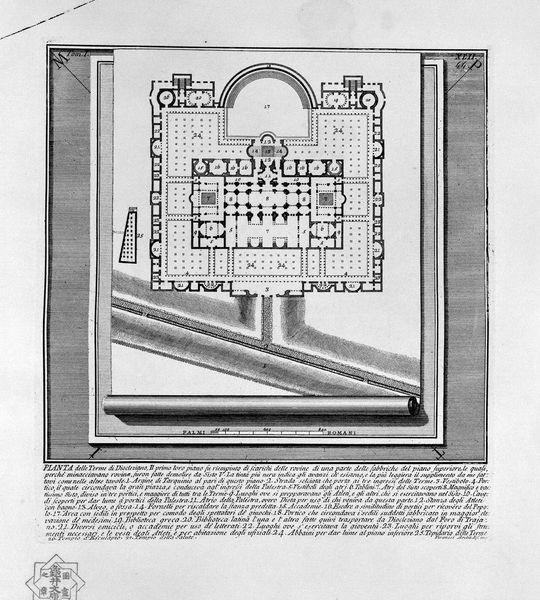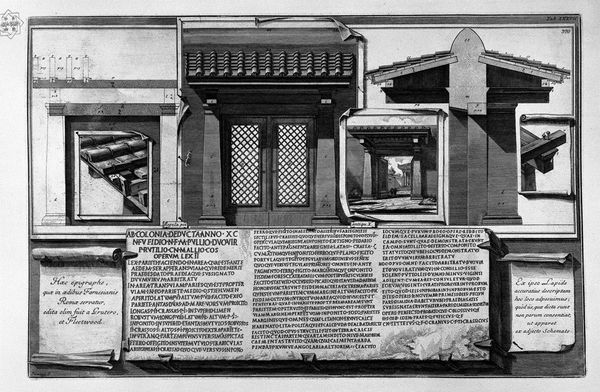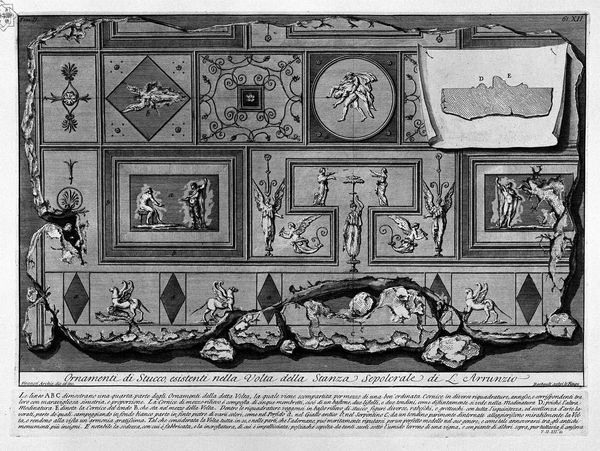
Inscriptions found in the excavation same without having a secure relationship Seize Scipios
0:00
0:00
drawing, graphic-art, print, etching, engraving
#
drawing
#
graphic-art
# print
#
etching
#
old engraving style
#
geometric
#
ancient-mediterranean
#
history-painting
#
engraving
Copyright: Public domain
Curator: Let's take a look at this engraving. It's entitled "Inscriptions found in the excavation same without having a secure relationship Seize Scipios," made by Giovanni Battista Piranesi. We don't have an exact date, but it’s likely from the mid-18th century. It looks like an etching, focused on various fragments. What's your immediate take on it? Editor: Stark and somber. All those fragments lined up… it feels like evidence meticulously collected after some cataclysm, archaeological ghosts presented for our observation. Curator: It is rather austere. Piranesi was known for his dramatic and imaginative architectural depictions, often bending reality, so this feels quite different. As an iconographer, do these fragments speak to you symbolically? Editor: Absolutely. Inscriptions, especially ancient ones, are always poignant. They're whispers from the past, often concerning the most personal aspects of life: love, death, memory. Even broken, each piece carries enormous weight. Curator: And placed together like this, they become a puzzle for us to solve, inviting us to construct our own narratives. But what does it mean, placing all of these unrelated relics on a single picture plane, without a clear contextual relationship? Editor: Exactly, each inscription stands alone. Piranesi gives no easy answers and leaves viewers grappling with the disconnections and fragmentation of history, perhaps speaking to how the past is inevitably altered and reinterpreted as it makes its way into modernity. What statement do you think Piranesi makes about the cultural memory? Curator: It makes me think about the growing accessibility of classical antiquity. Remember the 18th century’s obsession with archaeological discoveries. This print highlights this trend, but almost from a cynical angle; while we have access to this increasing catalog of artifacts, does that necessarily result in an improved, or at least more "accurate" understanding of the Ancient world? Editor: A provocative question. The beauty of images is they don't settle into single conclusions; they invite new conversations. We are forced to reconsider how historical narrative is not one story, but the aggregation of many perspectives that continue to evolve and shift depending on who is in the gallery. Curator: A perfect summary. Looking closer, this image opens into infinite doorways that complicate the act of witnessing history. Editor: Agreed, I look forward to learning the different ways people will reflect and remember the relics of this bygone civilization through the picture that Piranesi has offered.
Comments
No comments
Be the first to comment and join the conversation on the ultimate creative platform.
